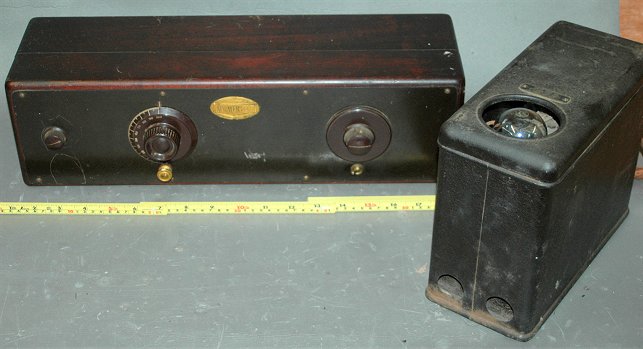
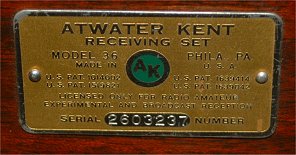
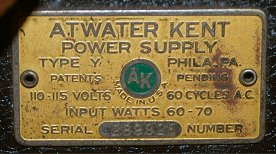

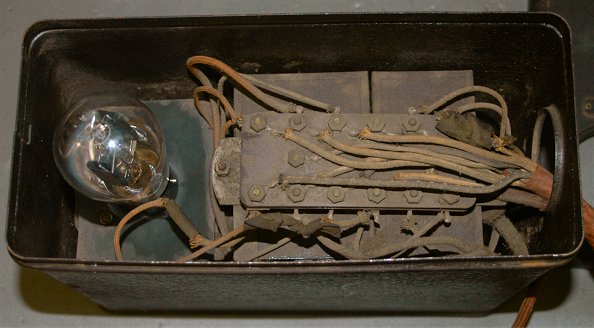
Eliminator Receiver
-Early AC Sets (1927-30)-
Battery to AC
Introdusing of AC Tube
Prevailing of AC Set
Bread Board to Metal Cabinet
Radio Museum
Reference
NOTICE:
Gothic is latest updates.
Japanese terms or company
names that is untranslatable are shown in spelled in Italics.
When not mentioned specially, all prices are original retail price.
Today, most of radios are powered by batteries. We need only a few small
dry cells to work a radio for a long time.
However, Early radio needs big, expensive, short-lived batteries. It was inconvenience.
In 1920s, power line was available in a city.
From 1925, power supply using AC power line was developed.
It was called “battery eliminator”. However, battery eliminator sometimes often added “hum” noise.
Battery eliminator ended up with installing inside of radio set.
In Japan, AC set called “Eliminator Receiver”.
At this site, We call early AC set that used separated speaker “Eliminator Receiver”.
Early AC set used horn speaker. At late 1920’s speaker was replaced to cone speaker.
The design of cabinet was simplified.
Japanese early AC set used crystal detector and 201-A tube.
To compensate a loss of crystal detector, reflex circuit was often used.
Transformer and power supply unit put on the market. Many battery set was
modified into AC set using such parts.
From 1928 to 29, New AC tubes (226,227,112A,112B etc) were introduced
and manufactured in Japan.
In 1930, New tetrode 224 put on the market. 224 renovated performance of RF circuit.
Japanese radio industry could manufacture most of radio parts.
A price of radio set and parts was reduced. AC set prevailed rapidly.
In 1931, The numbers of listeners reached 1 million.
In 1931, Matsushita Electric soon after founding started manufacturing
of radio.
Other many small manufacturers put cheap and low quality set on the market.
Big businesses faded from radio industry by the lack of competitiveness.
Japanese radio industry lacked leading big companies like RCA or Philips.
This structure of industry effected the later history of Japanese radio.
In 1927, Atwater Kent Model 37 put on the market.
Model 37 was early AC set that was installed in the metal cabinet.
Metal cabinet was suitable for mass-production and had enough strength to support heavy chassis.
The cost of AC set was reduced rapidly. Atwater Kent sold over 200,000 Model 37 only 4 month.
From 1930, “bread board style” changed into metal chassis.
And metal cabinet was introduced to reduce a cost.
Initial cost to manufacturing a metal cabinet was very expensive.
But the cost of cabinet could be reduced by mass-production.
Japanese radio industry was not suitable for mass-production yet.
Labor was very cheap. The cost of metal cabinet was not reduced.
Metal cabinet fade out and returned to wooden cabinet
American Sets
Atwater Kent Model 36 7-tubes TRF Receiver Atwater Kent Manufacturing Co. (U.S.A. 1927)
Atwater Kent Model 37 7-tubes TRF Receiver Atwater Kent Manufacturing Co. (U.S.A. 1927-28)
$88 (no tube)
Atwater Kent Model 40 7-tubes TRF Receiver Atwater Kent Manufacturing Co. (U.S.A. 1928-29) $77
(no tube)
Atwater Kent Model E Loud Speaker Atwater Kent Manufacturing Co. (U.S.A. 1928) $20
RCA Radiola 18 model AR-936 Radio Corpolation of America (U.S.A. 1928-29) $115
RCA Loudspeaker Model 100-A (UZ-1076) Cone Speaker Radio Corpolation of America (U.S.A. 1927-28) $35-29(after
Oct. 3, 1928)
RCA Radiola 33 Model AR-784 7-tubes TRF Receiver Radio Corpolation of America (U.S.A. 1929-30) $86.50
RCA Loudspeaker Model 100-B (UZ-783) Cone Speaker Radio Corpolation of America (U.S.A. 1929-30) $22
Apex Model 37 7-tubes TRF Neutrodyne Receiver United States Radio & Television Corp.
(U.S.A. 1929)
Japanese Sets
National 4-Tubes Reflex with Chrystal Detector Receiver 1928? National Radio Works /Futaba Shokai
National Super Horn 1928? National Radio Corporation
3-Tubes Reflex with Chrystal Detector Receiver (Modified) 1928? unknown
3-Tubes Reflex with Chrystal Detector Receiver 1928? unknown
4-Tubes Regenerative Receiver 1929? unknown
3-Tubes Regenerative Receiver 1929? unknown
Singer 5-Tubes Regenerative Receiver 1930? Sankyo Denki Kogyo K.K.
Singer 4-Tubes Regenerative Receiver 1930? Sankyo Denki Kogyo K.K.
SILVERLINE 2590 typeA型 5-Tubes Regenerative Receiver 1930? Matsuzaki Radio Shokai
Televian Model A-227 4-Tubes Regenerative Receiver 1931 Yamanaka Radio Electric Co.,
SHarp Model A Magnetic Cone Speaker 1931 Hayakawa Metal Works
Futaba 5-Tubes Regenerative Receiver 1931 Futaba Shokai Denki Kousakusho
Semi-Console 5-Tube Regenerative Receiver 1932 Home Blew
Eliminator Recieve
(Foreign Sets)
Atwater Kent Model 36 No.9390 7-tubes TRF Receiver Atwater Kent Manufacturing Co. (U.S.A. 1927)





TUBES: 226-226-226-227-226-226 + 280
Model 36 was Kent’s first AC radio set. It was electrified model 33 with a separate power pack model Y. Cabinet was similar to battery set.
Atwater Kent inhibited RCA license. However , to get new AC tubes (26,
27) from RCA, Kent acquired RCA license in Aug. 1927.
The articles about RCA license added on the name plate.
While the model 36 gained time, development of bran new AC set (model 37) was continued.
(Collection No.11815)
Atwater Kent Model 37 No.9500 7-tubes TRF Receiver, Atwater Kent Manufacturing Co. (U.S.A. 1927-28) $88(without tubes)
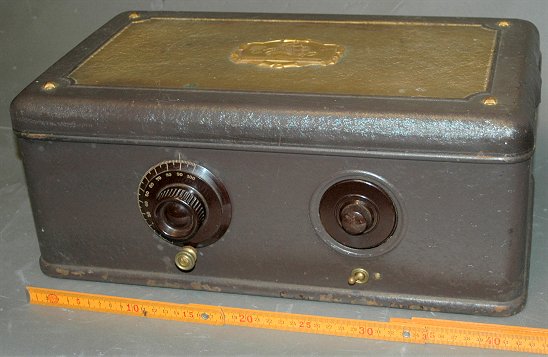
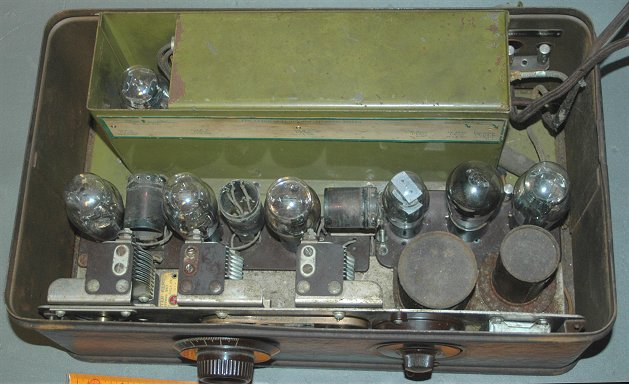
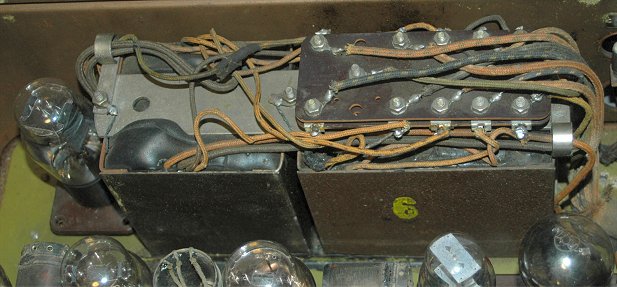
Inside view(left) and inside view if power supply unit (right)
TUBES, 226-226-226-227-226-171-280
This Model 37 was the first model of Kent's metal cabinet radio.
The circuit was simillar to the model 36.
Metal cabinet was suitable for mass-production. The cost of cabinet was
reduced. The price was only $88.
It had great adbance from other manufacturers. model 37 was put on the
market from Dec. 1927. 12,240 were made during 1927.
Atwater Kent had made more than 100,000 this model.
The Model 37 was related to the revised model 40.
(Collection No.11937)
Atwater Kent Model 40 No.9800 7-tubes TRF Receiver Atwater Kent Manufacturing Co. (U.S.A. 1928-29) $77(without
tubes)
Atwater Kent Model E Loud Speaker (1928) $20
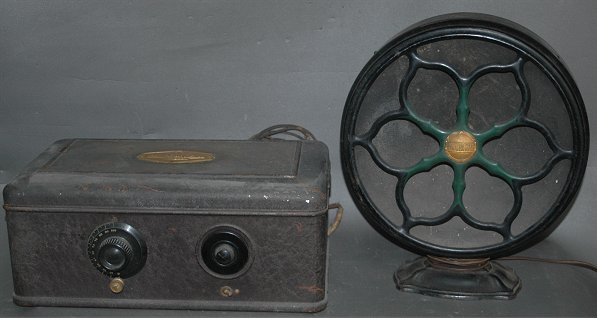
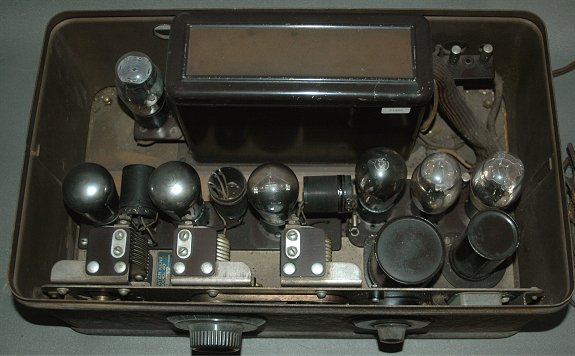
Tubes: 226-226-226-227-226-171-280
This Model 40 was revised model of first Kent's metal cabinet radio Model
37. Cost was reduced to $77 from $88.
Power supply was installed internal metal case, and potted to insulating to prevent electric shock.
Model E speaker was matched pear of Atwater Kent radio.
(Collection No.11466-2/10046)
RCA Radiola 18 model AR-936 Radio Corporation of America (U.S.A. 1928-29) $115
RCA Loudspeaker Model 100-A (UZ-1076) Cone Speaker Radio Corpolation of America (U.S.A. 1927-28) $35-29(after
Oct. 3, 1928)
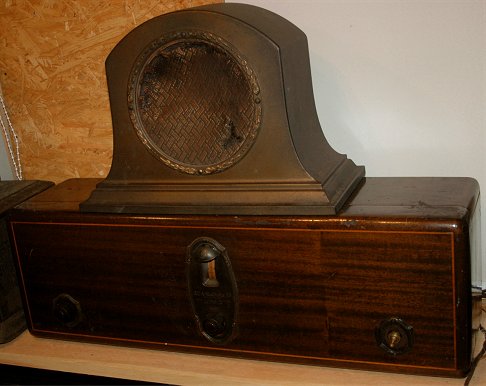
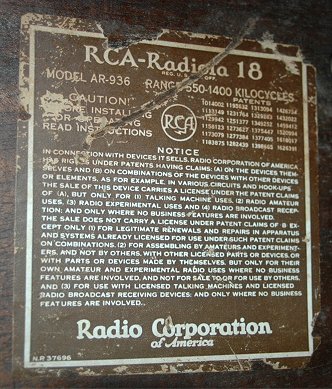
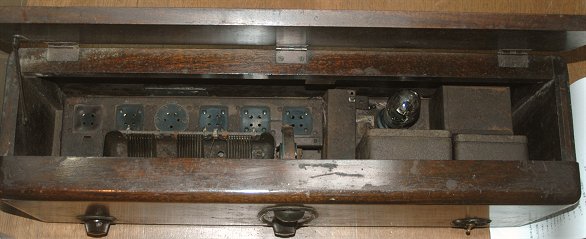
Tubes: 226-226-226-227-226-171A-280
In 1927, The first “socket power “ operated radio Radiola 17 was released.
Radiola 17 was 7 tubes TRF receiver using new AC-filament tube 226 and 227.
In 1928, Cost reduced and renovated model Radiola 18 was released.
The design of cabinet was very similar to the Radiola 17 except the escutcheon plates.
The Model 100-A loud speaker was recommended reproducer for Radiola 17
and 18.
This Radiola 18 may be imported officialy to Japan as new.
(Collection No.11694/10043)
RCA Radiola 33 Model AR-784 Radio Corpolation of America (U.S.A. 1929-30) $86.50
RCA Loudspeaker Model 100-B (UZ-783) Cone Speaker Radio Corpolation of America (U.S.A. 1929-30) $22
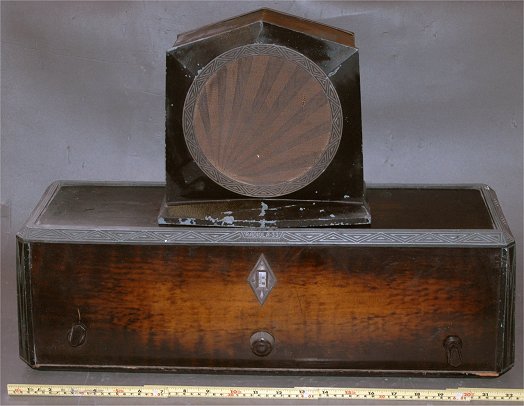
TUBES: 226-226-226-227-226-171A-280
Radiola 33 is the second generation of RCA ‘s electric radio.
Chassis was very similar to the Radiola 18.
Cabinet was metal case attached to a wood base.
The triangles and acute angles which takes its design from the decorations used by the native Americans.
The price of the Radiola 33 was reduced 25% from the Radiola 18.
The Model 100-B loud speaker was companion model with similar design for the Radiola 33.
(Collection No.11811/10053)
Apex Model 37 7-tubes TRF Neutrodyne Receiver United States Radio & Television Corp. (U.S.A. 1929)
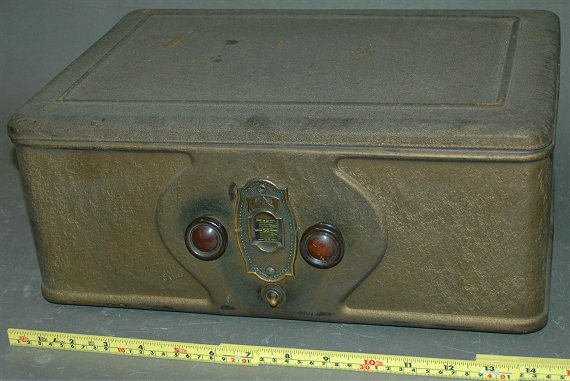
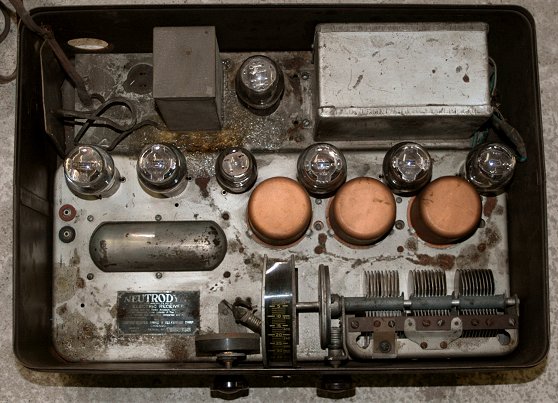
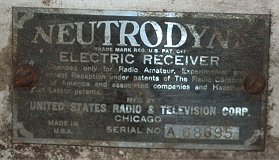
TUBES: 226-226-226-227-226-171-280
Apex Model 37 was early electric set with metal cabinet.
And this set was one of the latest Neutrodyne receiver.
(Collection No.11813)
Japanese Sets
National 4-Tubes Reflex with Chrystal Detector Receiver 1928? National Radio Works /Futaba Shokai
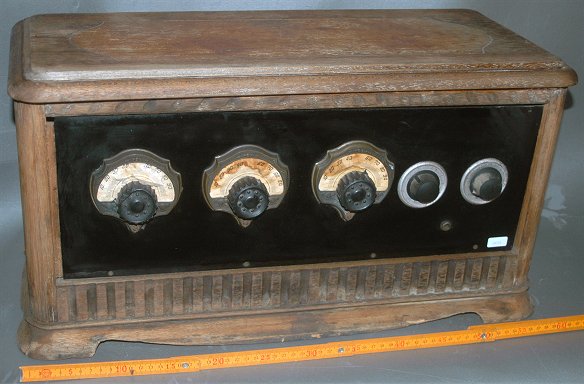
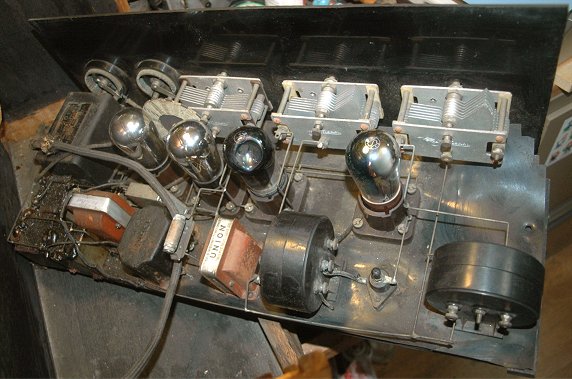
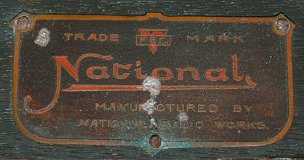
Tubes: 4- UX-201A
This "National" radio was not Matsushita's set.
Mr. Kitao operated radio manufacturer Futaba Electric Co., from 1920’s.
Futaba used “National” brand first. Mr. Matsushita bought the brand from
him.
Mr. Kitao was went into partnership with Matsushita to manufacture radio in 1930.
However, they broke off the partnership by difference of policy for quality.
In 1931, Mr. Kitao started Futaba Electric on his own account.
This set was latest model of Futaba's National.
This set was modified from battery operated to AC set.
Coils and variable capacitors were original.
Tubes were missing. We installed UX-201A.
The finish of cabinet is fear condition. The moldings of front panel were missing.
(Collection No.11771)
National Super Horn 1928? National Radio Corporation
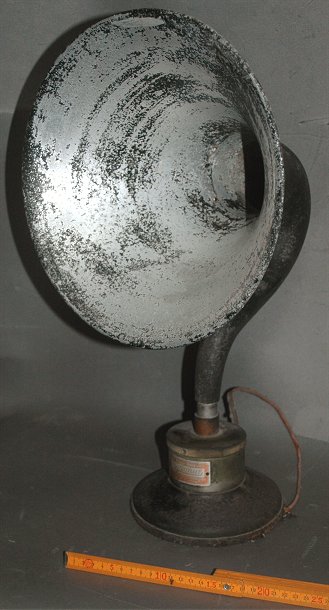
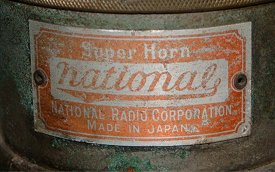
“National” named Japanese horn speaker. However, logo type and company
name were different from FEC’s product.
Manufacturer was unknown.
(Collection No.10051)
3-Tubes Reflex with Chrystal Detector Receiver (Modified) (1928? unknown)
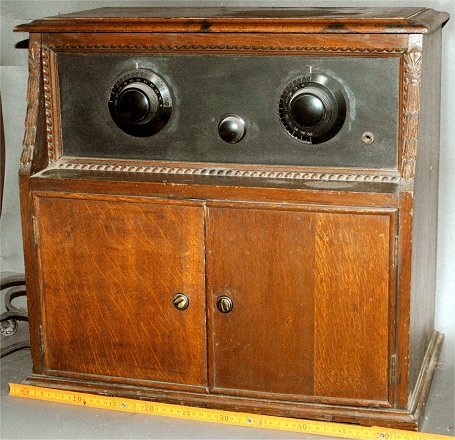
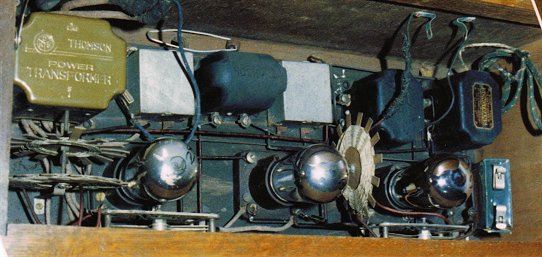
Tubes: 3- UX-201A
This set was modified AC set. Original set was battery operated straight
set.
Lower area of cabinet is battery compartment.
Such design of cabinet was typical style in Japanese battery radio.
Tubes ware 3-UX-201A, and circuit was crystal detector with reflex.
In Japan, such circuit used for early AC set to reduce number of tubes.
Power transformer, choke coil and capacitors were added.
One 201-A (ex final AF. stage) modified into rectifier. C battery remained.
Crystal detector was missing.
(Collection No.11277)
3-Tubes Reflex with Chrystal Detector Receiver(1928? unknown)
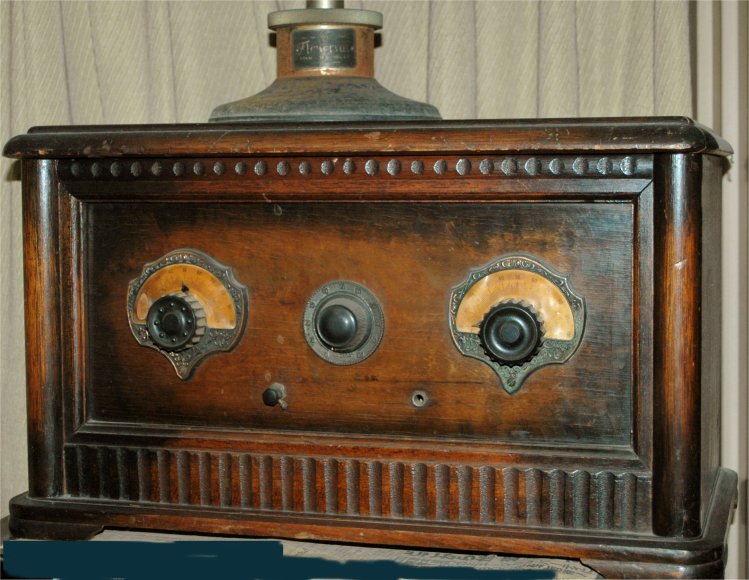
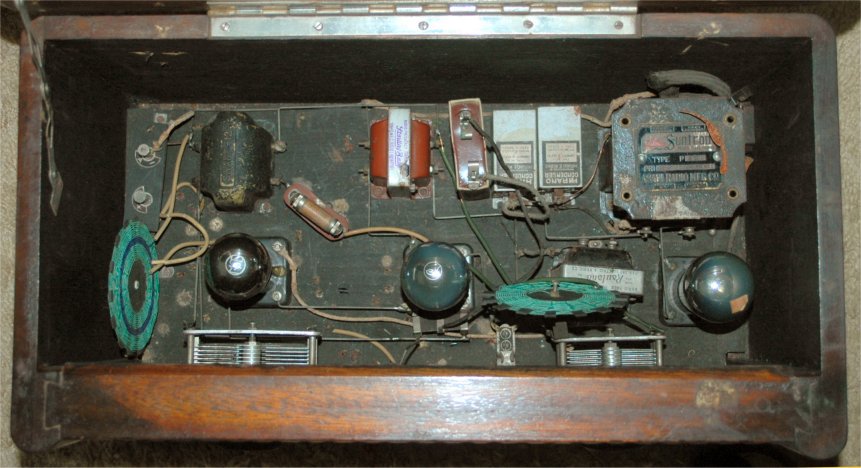
Tubes: 3- UX-201A, Horn Speaker
This was Japanese early AC set.
To reduce number of tubes, crystal detector and reflex circuit was used.
All tubes include rectifier were 201A.
C battery remained.
Reflex circuit was unstable and difficult to works well.
Reflex set faded out by a falling in price of tubes.
(Collection No.11001)
4-Tubes Regenerative Receiver (1929? unknown)
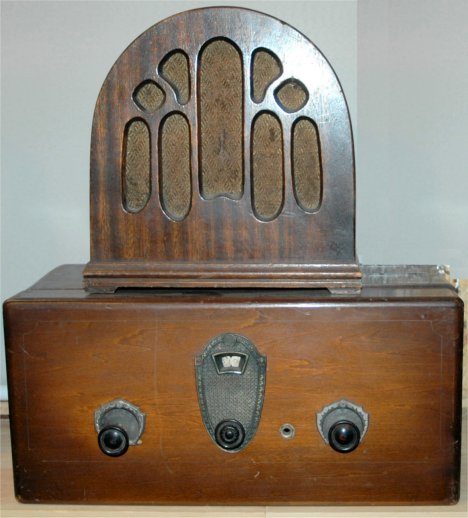
Tubes: 227-226-112A-112B, Magnetic Speake (Outside box)
This was typical Japanese “Eliminator” set using new AC tubes.
Circuit was regenerative grid detector and transformer coupled 2stage amplifier.
Chassis was constructed on “bread board”.
This set was probably home brew or manufactured by radio shop.
Speaker was matched model but not original pear.
(Collection No.11004)
3-Tubes Regenerative Receiver (1929? unknown)
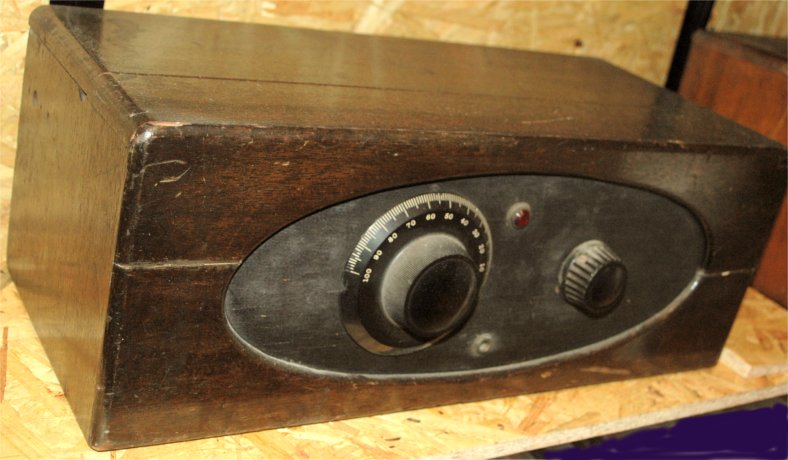
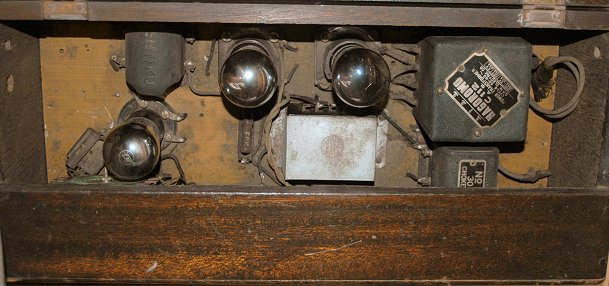
Tubes: 227-112A-112B
This was Japanese regenerative set using 3 AC tubes.
Tickler was semi-fixed. Single control realized to easy operation.
(Collection No.11002)
Singer 5-Tubes Regenerative Receiver (Sankyo Denki Kogyo K.K. 1930?)
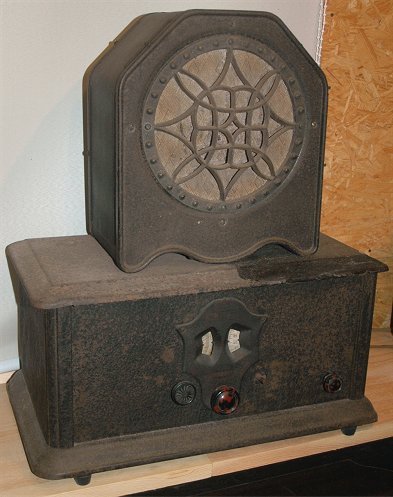
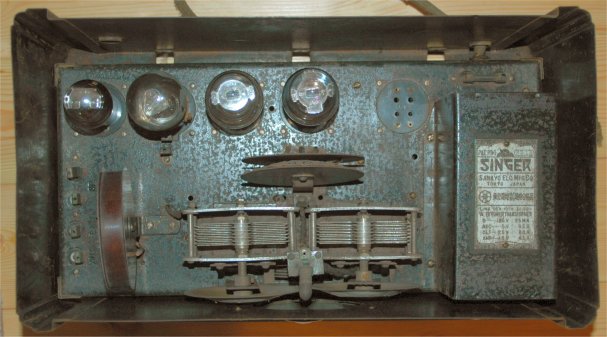
Tubes: 226 - 227 - 226 - 226 - KX-112A , Magnetic Speaker
Singer (Sankyo Electric) was one of the leading companies of Japanese metal cabinet radio.
Independent tuning dial was used.
Many metal cabinets were lost by recycling at wartime.
This speaker was supplied as matched pear of this model.
But these are not original pear. Rectifier tube was missing.
(Collection No.11572)
Singer 4-Tubes Regenerative Receiver 1930? Sankyo Denki Kogyo K.K.
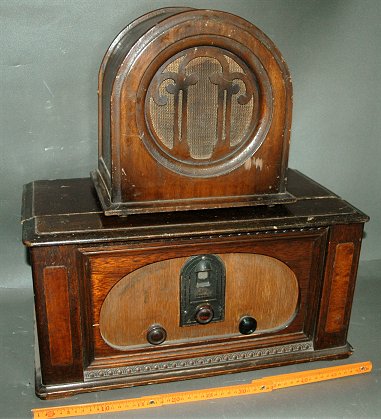
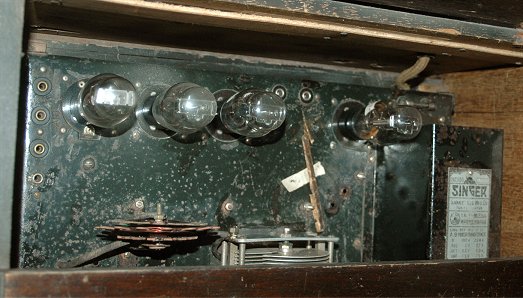
Tubes: 227-226-226-KX112A , Magnetic Speaker
This chassis of Singer radio was made for installed original metal cabinet.
Same chassis sold as complete chassis. Cabinets were sold from another manufacturers.
This cabinet was copy of earliest model of Matsushita radio.
Tubes were exchanged to dome type. Chassis keeps original condition.
Speaker was matched model but not original pear.
(Collection No.11336)
SILVERLINE 2590 typeA 5-Tubes Regenerative Receiver (1930? Matsuzaki Radio Shokai)
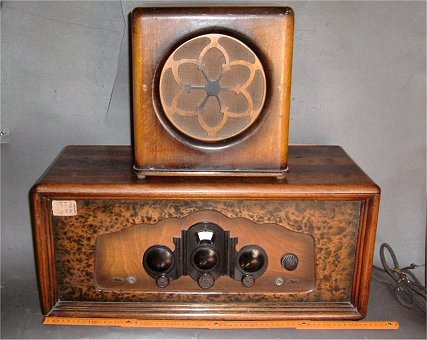
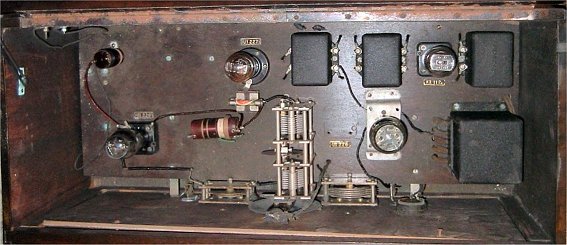
Tubes: 226-227-226-112A-112B , Magnetic Speaker
This was small manufacturer’s high grade AC set.
Cabinet had 75cm wide. Finish was very good.
Steel chassis was used.
Tubes and coils were replaced after WWII.
This set continued work until 1950’s.
(Collection No.11597)
Televian A-227 4-Tubes Regenerative Receiver (1931 Yamanaka Radio Electric Co.,)
Tubes: 227-226-112A-112B, TRF, Magnetic Speaker
Yamanaka Radio Electric was one of the leading companies of Japanese radio
industry.
This was Yamanaka’s early set using metal chassis.
Speaker was original matched pear.
This se was modified at late 1930’s.
Audio amplifier stage (26B tube used) was added to increase total gain.
Knobs was replaced at early 1940’s.
(Collection No.11594)
Sharp Model A Magnetic Speaker 1931 Hayakawa Metal Works
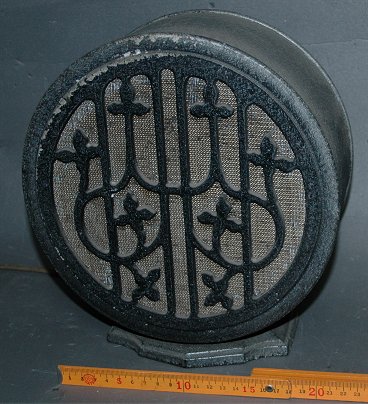
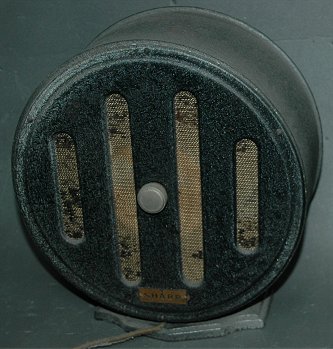

Sharp Model A speaker was Hayakawa’s early cone speaker supplied as matched pear of the Sharpdyne No.30 “Fuji” and No.25 radio set.
(Collection No.10022)
Futaba 5-Tubes Regenerative Receiver (1931 The Futaba Electric Co.)
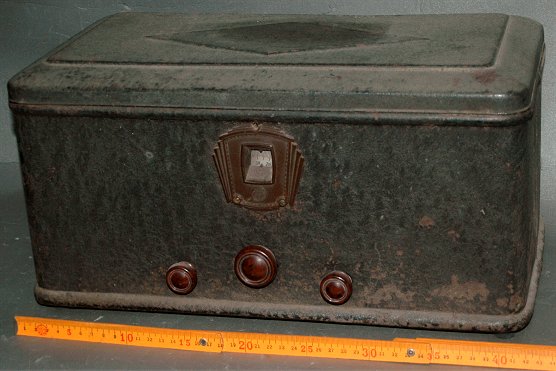
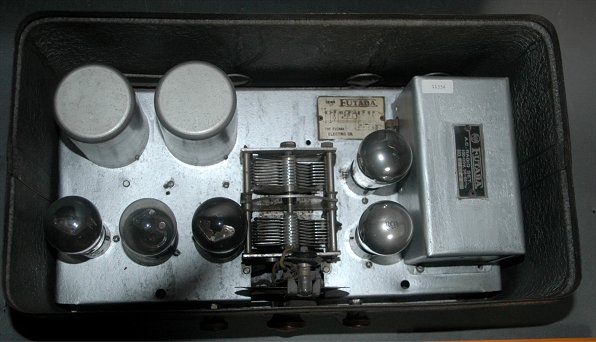
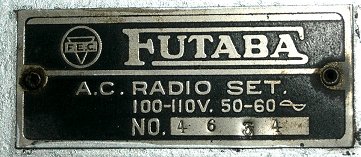
Tubes: 226 - 227 - 226 - 112A - 112B
Mr. Kitao operated radio manufacturer Futaba Electric Co., from 1920’s.
Futaba had “National” brand. Mr. Matsushita bought the brand from him.
Mr. Kitao was went into partnership with Matsushita to manufacture radio in 1930.
However, they broke off the partnership by difference of policy for quality.
In 1931, Mr. Kitao started Futaba Electric on his own account.
This model was very early Futaba radio.
(Collection No.11334)
Semi-Console 5-Tube Regenerative Receiver (1932 Home Brew)
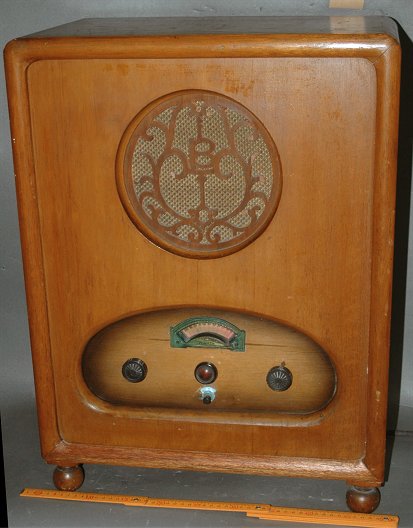
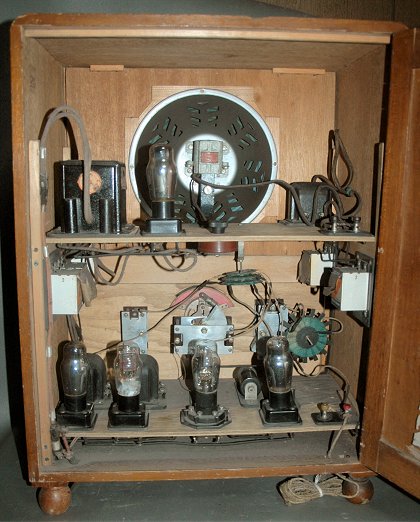
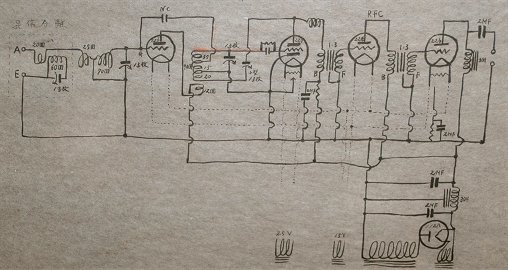
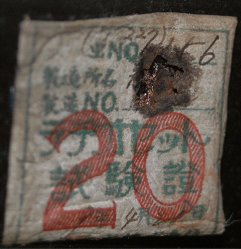
Hand-writed Schematic Diagram indicated on the Rear Panel (left) Tested
Label by Electric Power Company (right)
Tubes: 226-227-226-226-112A, Magnetic Speaker (Waltz)
This was early speaker installed set and rare Japanese console radio
All parts made by foremost manufacturer used.
Power supply was installed upper area of cabinet.
Classic technology in battery set era remains in this circuit.
(Collection No.11746)
Radiola -The Golden Age of RCA 1919-1929-, Eric P. Wenaas, Sonoran Pablishing,
LLC,
Radio Manufacturers of 1920's Vol.1-3, Alan Douglas, Vestal Press (U.S.A.)
1991
A. Atwater Kent: The Man, the Manufacturer, and His Radios, Ralph Williams, John P. Wolkonowitz, Sonoran Publishing Inc. 2002